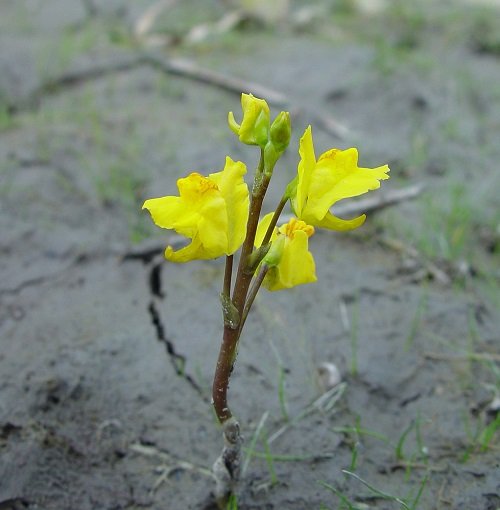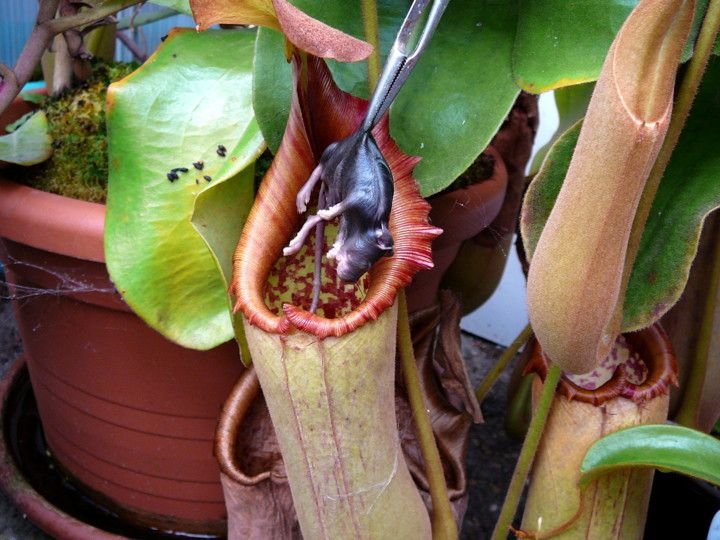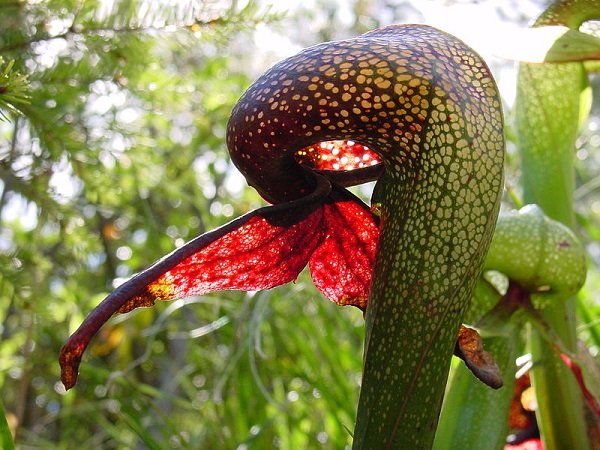The flora of our planet is so amazing that even among plants could find those who eat heterotrophically.
Heterotrophs – are organisms that are unable to synthesize organic substances from inorganic by photosynthesis or chemosynthesis. For the synthesis of organic substances necessary for their life, they require exogenous organic substances that is produced by other organisms. Heterotrophs are almost all animals and some plants.
Carnivorous plants are plants that have adapted to catching and digesting small animals, mostly insects. Thus, they supplement their normal autotrophic nutrition (photosynthesis). These plants are found in all parts of the world.
1. Genlisea.
Genlisea usually grows in humid terrestrial and semi-aquatic environments and is common in Africa and Central and South America. This plant is a small grass with yellow flowers that use a trap type crab claws. It's easy to get into such traps, but it's impossible to get out of them because of small hairs that grow near the entrance. These plants have two different types of leaves: photosynthetic leaves above the ground and special underground leaves – traps that entice and digest small organisms. Underground leaves also act as roots, absorbing water and attaching, since the plant itself does not have roots. These underground leaves under the ground form hollow tubes that look like a spiral. Small microbes enter these tubes with the help of a stream of water, but they can not get out of them. When they get to the exit, they will already be digested.
2. Utricularia.
Representatives of the genus are common throughout the world, absent only in Antarctica and a number of oceanic islands. These are the only carnivorous plants that use a bubble trap. These plants are devoid of roots and carry a greater or lesser number of trapping vesicles. Each vial provided with an opening by an inwardly valve, whereby small water animals can freely penetrate into the bubble, but can not go back out. Dying, they serve as food for the plant. In 2011, researchers from France and Germany recognized Utricularia as the fastest carnivorous plant in the world.
3. Sarracenia.
Saracenia or the North American insectivorous plant is a genus of carnivorous plants that occur in the eastern coast of North America, Texas, Great Lakes, and south-eastern Canada, but most are found only in the south-eastern states. This plant uses leaves in the form of a water lily as a trap. Insects attracted by colour, odour and secretion, similar to nectar on the edge of the water lily. Slippery surface and narcotic substance bordering nectar, contribute to the fact that insects fall inside, where they die and are digested by protease and other enzymes.
4. Nepenthes.
This tropical insectivorous plant is another kind of carnivorous plant with a trap, which uses trapped leaves in the form of a water lily. There are about 130 species of these plants that are widely distributed in China, Malaysia, Indonesia, the Philippines, Madagascar, Seychelles, Australia, India, Borneo and Sumatra. Most of the Nepenthes species are tall lianas, about 10-15 meters long, with a shallow root system. From the stem are often visible leaves with a tendril that protrudes from the tip of the leaf and is often used for climbing. At the end of the barbel, the water lily forms a small vessel, which then expands and forms a bowl. The trap contains a liquid released by the plant, which can have a watery or sticky structure, and in which the insects eaten by the plant are drowning. The lower part of the bowl contains glands that absorb and distribute nutrients. Most of the plants are small and they catch only insects, but large species such as Nepenthes Rafflesiana and Nepenthes Rajah can catch small mammals such as rats.
5. Darlingtonia Californica.
This is the only representative of the genus Darlingtonia, which grows in northern California and Oregon. It grows in bogs and springs with cold running water and is considered a rare plant. Darlingtonia leaves have an onion shape and form a cavity with an opening that is under a balloon-like structure and two sharp sheets that hang like fangs. Darlingtonia uses a trap type crab claws. Once the insects are inside, they are confused by the specks of light that pass through the plant. They land in thousands of thick, thin hairs that grow inside. Insects can follow the hairs deep into the digestive organs, but can not go back.
References:





